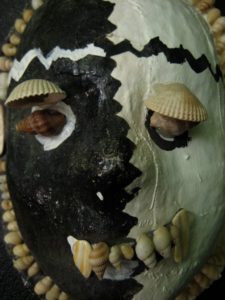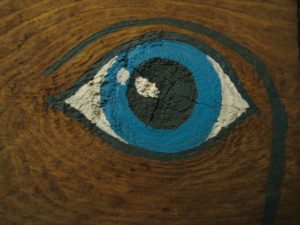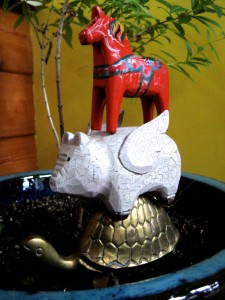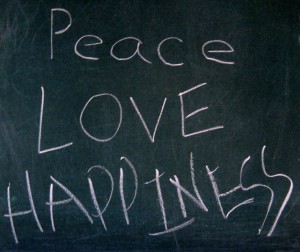
– Photo by Jan Ketchel
Good Morning! Here is this week’s audio channeling, suggesting that this is a good time to pay attention to the body and its uniquely personal language.
Remember, you’re all right!
Have a wonderful week!
The body works feverishly to protect us from outside invaders such as bacteria and viruses. The psyche, the mental self, is similarly challenged to protect us from disturbing thoughts, feelings, and anxieties that originate within the mind, as well as those that stream into us from the outside world.

We humans are extremely suggestible beings, quick to be influenced or rattled by inner thoughts and outer events. Behind it all we are well protected by our ancient natural defenses that unconsciously take over to defend and preserve our sanity in the face of real danger. Evidence of this ancient archetypal defense system is staggering, as the powerful psychic mechanisms that take control during trauma reveal.
In countless examples, trauma victims have been served by ancient inner programs that encapsulate their trauma, keeping it unknown to the fledgling ego that strives, while under attack, to maintain its tentative hold on reality and its cohesive identity while being overwhelmed by shattering assault. The decision to “forget” in trauma is not a conscious one; it is a function of a far more instinctive self that knows what is needed for survival. Sometimes we need to forget for a while, sometimes for a long while.
Human beings are additionally equipped with ego consciousness, which can supplement nature’s deeper defenses and greatly improve psychic hygiene. As we live now in a world in the very early stages of major transformation, with instability in governance and terror daily breaking through its unstable seams, we must take conscious responsibility to stabilize our own psychic balance, that is, we must do our conscious best to supplement the defenses of our ancient self.
With respect to potential psychic infection from the outside world, the ego really does have vast control over the influx of outside energy. In a nutshell, where we put our attention largely decides what comes into us.
In our time, social media is a huge raging river of collective energy that greatly excites and equally exhausts our psychic energy but also can vastly impact moods—highs and lows—as well as our ability to process objectively all that barrages us. The decision to limit exposure to social media promotes psychic balance; it offers as well the opportunity to step back and begin to think for oneself. Collective energy can usurp one’s identity. We can be swept into a tribal identity, losing the boundaries of our “individual” self, losing also the ability to think for ourselves.
The partisan divide currently infecting the whole world can, as well, seduce us into one polarized corner or another. We are in an either/or state right now that does not see resolution in a reconciliation with the opposites but calls for unity through divisiveness. Divisiveness in the psyche sets the stage for psychic disunity, as the disenfranchised parts of the psyche will rebel, usually through disturbing symptoms of anxiety, dread, panic, fear or rage.
Suspending judgment toward all groups in the world, regardless of their political persuasion, with an eye toward understanding the why of differences, can create greater empathy and inclusiveness for all points of view and all peoples. This in turn promotes inner calmness within the self and reflects greater inner acceptance of even the most recalcitrant aspects of the self!
Inwardly, the attitude of ego consciousness toward the vaster unconscious self is a critical determinant of psychic health. For instance, if the ego rules daily life through a narcissistic self-centered lens, it is likely to alienate itself from the rest of the self, with the result again being far-reaching symptoms, even perhaps the manifestation of bodily disease in an attempt to physically communicate the reactions of the deeper self toward the ego’s non-inclusive leadership in the affairs of daily life.
If the ego can see its role as ascertaining and caring for the true needs of the overall self versus its narrow special interests, then the unconscious will be grateful and better poised to support its ego partner. This can be established through remembering, recording and contemplating the dreams dreamed each night. Dreams remain the royal road to the unconscious, they are a latent golden portal to the deeper self, awaiting just a little attention.
As well, a willingness to calm frantic energy through meditation and a practice such as pranayama breathing can allow for a still heart that communicates objective truths, perhaps even suggesting actions for the ego to follow. This inner relationship with different parts of the self can lead to an inner harmony, greatly promoting psychic hygiene.
An overall willingness to introvert daily—that is, to pull attention away from outside energy, to be calm in nature for instance, or simply content within the confines of the self—is perhaps the most important ego practice to counter the overpowering extroverted draw of our time and restore psychic balance.
There are still rocky seas before us, but good psychic hygiene can provide the necessary ark of awareness to safely maintain our balance through the troubled waters of our times.
Sailing versus assailing,
Chuck

To own is to take full possession of that which truly belongs to oneself. If a child dreams of her enraged father at her bedroom door with a club in his hand, this dream originates in her own psyche; she completely owns the dream, it is her dream and nobody else’s.
Regardless of the meaning and outer causes of the dream, the dream, with its inner impact upon her, is her personal experience, constructed and completed within the boundaries of the self. The child must assume full ownership of her dream. The experience of the dream may take her years to fully integrate, but the experience is forever a fact of her life, a part of herself which must be reckoned with and given its rightful place within the inner boundaries of herself.
If, in a waking state, that same child is confronted by her enraged father at her bedroom door in reality, her inner experience of this rattling intrusion is hers and hers alone too. The experience is fully recorded within herself and lives on within herself as a psychic content that beckons a legitimate place among the many other psychic contents of experiences that reside within her. Though in both cases a person beyond the boundaries of herself is implicated, that is her father, and indeed some outer actions and interactions may be necessary, her actual experience in both situations and how it is represented within herself is hers and hers alone. No one can tell another person what their inner experience is or should be; it is fully what it is within the person who is having or has actually had that unique inner experience.
Experience is. It happens. Like nature, experience takes us into the unknown, the unexpected, the dangerous, the terrifying and the spellbinding. Experience leads us into the unfathomable depths of our own nature, to places, emotions, sensations and thoughts we may have no preparation for. In one instance we may experience bliss, in another serious loss. Experience itself is unconcerned with whether something is good or bad, right or wrong—it simply happens. We of course must apply a judgment dimension to our experiences in an attempt to make sense of them. Without sense we have no order, and without order there is no definite self, and without self there is chaos. Chaos within the psyche results from a logjam of undigested experiences.
We must decide if an experience is right or wrong, good or bad, appropriate or inappropriate, acceptable or unacceptable. All these parameters help us to quantify and qualify an experience, to truly ‘know’ our experience. These are the operating tools of the rational mind, the foundation of our consciousness. Unfortunately, as helpful as these conscious tools are, helping to stabilize and navigate our consciousness, they can have the unfortunate side effect of distancing us from the fuller impact of the experience, which transcends the ordering function of the rational mind and continues to haunt the self in some form of psychic or physical symptom.
We must reckon with the full impact of an experience to be freed of such antagonistic symptoms as anxiety and fear, which may actually be placeholders of our disowned experiences, discontented prisoners within the self.
The psyche might also be riddled with obsessive anger and blame as it locates the responsibility for its experiences in the person of an outside perpetrator, or some permutation thereof. Of course responsibility must be assigned where it is due and appropriate action be taken to address or redress an act, but inner reconciliation with one’s experience requires full ownership of one’s experience as one’s own, regardless of the sources or players involved in setting the stage for one’s inner experience.
Shamanic recapitulation and EMDR are two practices that enable one to fully assimilate and own the deeper impact of an experience. Both techniques incorporate psyche and body to facilitate assimilation.
C. G. Jung observed that we internalize the soul of the land we inhabit. For America, that means that the American soul is Native American. Carlos Castaneda gifted us the practices of the shamans of the Americas, in particular the breathing practice of recapitulation. Francine Shapiro, founder of EMDR (Eye Movement Desensitization & Reprocessing), discovered the bilateral movement of recapitulation, I imagine, through the Native American soul of America that projected itself onto her unique discovery process.
Reliving one’s life experiences while bilaterally breathing from side to side is the simplest gift from the native soul of America. With this simple breathing practice we consciously put our houses in order, fully own our experiences and, relieved of the tension of them, we are prepared to fully engage in new life and new experiences, all energy on board for new adventures.
Assuming full responsibility for one’s own experiences provides a most powerful container of self, from which we are empowered to reconcile life lived and release the self to fully enter new life unburdened, with fluidity, totally freed and ready for new adventures!
Owning the experience,
Chuck
It’s a calm, dark early morning, the sun’s light completely obscured by dense clouds. The rain will arrive soon. Jan and I are reading the Visions seminars, March 2, 1932, as Jung discusses sealing up the projection-making factor of the psyche, the animus for women, the anima for men.

Having just completed the final touches on my previous blog, The Heart of Habit, Jung’s discussion clearly points to the next level of methodology to achieve self-knowledge, the step beyond avidya, the repetitive pattern of habit. Jung points to the science of alchemy, where the animus or anima is sealed tightly into a cauldron or retort, its energy and influence separated from actual reality, whereby freeing us to see the true nature of things devoid of the filters of opinions and moods that the projective-making factor normally shrouds the objective world with.
Jungs allusion here to alchemy actually mirrors psychotherapy, where the patient learns to not be controlled by the opinions and moods that generally overtake conscious perception and action. In therapy, the ego learns to differentiate itself from these automatic reactions and in that restraining process ultimately achieves release from the hold these deeper anima and animus entities generally exert upon daily life.
As Jan and I ponder the pragmatics of this transformative process, we suddenly notice a hunched up raccoon scamper across our yard and then climb up a pine tree. This is startling because although many animals find their way to our little sanctuary this is the first sighting of a raccoon on the grounds. Of course, we immediately seek the meaning of this synchronicity. What is the relationship between the alchemical retort holding the energized projection-making character in the psyche and the raccoon? Could the behavior of the raccoon be nature’s practical guide to this transformation?

The most striking feature of a raccoon is its mask. When we put on a mask we create secrecy, we hide a part of ourselves from public view and in turn we stalk a different personality. The Shamans of Ancient Mexico considered the art of stalking, the ability to fully embody another personality, a critical exercise in fluidity, a necessary skill to achieve freedom in the ever-changing worlds of infinity. In addition, when we outwardly live the mask we wear, we completely seal the container of the projective-making factor within our personality; we remove if from active influence over our lives.
This sealed alchemical retort, containing a powerful energetic part of ourselves, is then allowed its own transformative milieu within the sensory deprivation container of the self. Deprived of outside involvement and influence it loses its compulsive outwardly-directed fixation and crystalizes into a character that can take us deeper into the inner recesses of our being directly, as opposed to its former function of projecting those inner contents onto the outer world and drawing us into compulsive outwardly-seeking behaviors. This opens the door to direct inner relationship with the unconscious, largely removing its obscured projections from being acted upon in the outside world.
The key to raccoon’s success is its secrecy. The key to release from compulsion via raccoon medicine is to bottle up the compulsion and keep it completely secret from the rest of the self. The outer mask we then stalk life with completely avoids any contact with thoughts, feelings, and behaviors related to the desired object. They are not indulged in in any way, as all attention and energy is focused on stalking another being, another way of being.

Eventually—and raccoon medicine requires a lengthy time period of at least 5 months—the energetics of the compulsion in the sealed retort will begin to crystalize into an inner guide, an inner helper that will take one to the deeper riches within the self.
Thank you, “Rocky Raccoon” for imparting the wisdom of your medicine for those ready for the inner secrecy and outer mask of transformation and self-knowledge.
Chuck
At a certain level of reality, I and We become One. Growth might be defined as an ever-expanding realization of our essential Oneness. In the meantime, we grapple with the discovery, ownership, and coordination of our many parts.

Within the self of every “individual” are many parts: some known, many unknown, and still others disowned. Psychology has coined the terms conscious and unconscious to differentiate between those parts that we know about from those that we don’t know about but also are.
At the center of the known self—the seat of consciousness—is the ego. The ego has many “parts,” including the “face” it shows the world, called the persona, as well as a younger child state, and an adult state. Each of these parts has its own ambitions, needs, and motives. Being conscious “parts” allows each of these centers to have relative accessibility to awareness. That is, we are basically familiar with these states of being. They may, and often do, squabble among themselves.
For instance, the persona—the actor that we present to the world—often sees itself as the true self. The fact that I am a psychotherapist is indeed a real part of me, however, it is not the whole of who I am.
In another example, the adult ego, with its capacity to plan, organize, and make things happen, may trump the needs and desires of its child part, who wants to play.
The permutation of struggles at the ego level alone are staggering, particularly when the parts become tricksters in their maneuvering.
Trickster is a character who has an ulterior motive, a secret ambition or intention that powers its behavior. Trickster has little interest in fairness, cooperation, or consciousness. It’s goal is to get what it wants.
Trickster may be intelligent and cunning, or foolish and obvious, but trickster definitely does not play by the rules. Nonetheless, if we are willing to slow down the action and reflect, the trickster in all our conscious parts can be identified and a resolution to contradictory motives becomes possible.
However, when we approach the depths of the unconscious mind the plot thickens, as trickster can allude all but a very determined introspection.
The unconscious mind, all that we don’t know of who we are, is composed of countless layers. The uppermost region houses all that once was conscious but for a myriad of reasons has been erased from conscious awareness. Here we find many traumatic experiences, as well as parts of the ego-potential deemed unworthy of development.
Traumatic parts have a life of their own and often function as tricksters bent on being discovered by the conscious mind. For instance, a news item on TV might trigger an intense emotional overreaction, brought on by a traumatic memory insisting on being consciously redeemed.
Similarly, rejected ego parts—forming what Jung called the shadow—may function as tricksters by projecting a compelling but distorted perception onto the motives of a friend or foe that actually reflects the true feelings of the rejected inner part but completely distorts outer reality.
As we go deeper into the unconscious mind we encounter what Jung called the anima/animus parts, the contrasexual components of the psyche, unrealized at a conscious level. These parts have their trickster ability to project themselves in powerful attractions to people in the world that distort completely who they really are. These trickster entrapments form the core of many troubled relationships.
At the center of the unconscious mind is the Self, the CEO of the entire psyche. The role of the Self is to establish balance in the entire psyche—conscious and unconscious. The Self is the higher power of the psyche. Ideally, the ego center of the conscious personality will subordinate itself to the dictates of the Self, which has the interests of the greater whole in mind.
Unfortunately, the ego often takes on its own trickster side, subverting the true needs of the Self, using all its power for decision and free will to accomplish its own aims.
If the imbalance thereby generated is too extreme, the Self counters with its own trickster side and generates symptoms of fear in the ego, such as an agoraphobia, where the ego can’t leave the house. To rein the ego in, the Self can also create psychosomatic symptoms, such as panic attacks or physical illness, to interfere with the ego’s willfulness.
The Self might also generate dreams that preempt the ego’s control through a terrifying nightmare that restores the waking ego to humility.

The difference between Self as trickster and all the other personality parts as trickster is its selfless intentions. The Self seeks unity and balance as its aim. When the other parts of the personality employ the trickster, it generally reflects a power play to meet individual needs, often at the expense of the greater needs of the overall Self.
The Self is only forced to become the trickster when the ego refuses to listen to its guidance. When the ego, like a good General, looks to the Self as Ruler, the Self responds with supportive guidance, energy, and freedom from symptoms.
So, trickster to trickster, stay in alignment with the Self, a much smoother ride to wholeness!
Bumping along,
Chuck